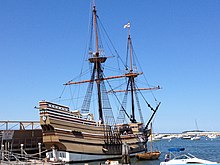 |
| Top, snippet of front page of family history booklet. Bottom, index of names in the booklet |
This summer's genealogy project was writing about my husband's 18 ancestors who served in the Civil War. Although most were fighting for the Union, thanks to a wonderful Wood cousin, I had a head-start researching the distant cousins on the Confederate side.
Every man who served had a fascinating and often poignant story. I researched and wrote about their lives and families before the war, what their military units did during the war, and the course of their lives and families after the war. My research showed that only two ancestors died during the war--both of disease, not wounds. This was a sadly common pattern during the Civil War.
Now, to add finishing touches that make this booklet as appealing and accessible as possible, I needed to think like a reader!
Finishing touch: Catch the eye
From experience, I know that the next generation enjoys a pop of color to catch the eye. So I found a colorful and evocative free photo to illustrate the first page (thanks to Pixabay), as you can see at top of this post.
In fact, every ancestor profile has some illustration, whether it's an excerpt from a pension record, a letter from the man's military files, or an illustration from an out-of-copyright mug book. My goal is to keep the reader's attention or at least intrigue the reader enough to look further.
Finishing touch: Did you know...
My first page also contains a few highlights and spoiler alerts. After all, when I pick up a book, I read the inside flap or back cover to see what's inside. That's what my highlights/spoiler alerts page is all about.
I explained that some Wood ancestors were in hotly-contested battles like Chickamauga...in famous engagements like the Monitor vs. the Merrimac...came from all walks of life before the war (blacksmith, farmer, tinsmith, mariner, doctor-in-training, career military). This is my way of saying to my audience: Read on for even more interesting details!
Finishing touch: What's in it for me?
I also needed to answer the unspoken question from every reader...what's in it for me? Well, one ancestor might be a distant cousin, one might be a 3d grand uncle, but all are related to you. The surnames are also a tipoff that these people were in our family tree.
My table of contents lists each man (and his birth/death dates) and indicates whether he served for Union or Confederacy (yes, I used color to make the words stand out). Next, I list the full name of his wife or wives, and their dates. Then I show the exact relationship to my husband and to the next generations.
So Lemuel C. Wood, Jr., who was in both the Union Army and the Union Navy, was a 1st cousin, 3 times removed to my hubby and his siblings. Their relationship to Dr. Thomas Fanning Wood, who served the Confederacy, was much more distant: he was their 6c3r.
Finishing touch: Find an individual quickly
Thinking like a reader, I realized someone might want to find a particular person or family quickly. In a 40-page family-history booklet, that's not possible without an index. With an index, if readers are curious about only the Larimer ancestors, they can look at the Larimer names in the index, for instance. Or if readers want to look up a name that's familiar, they can browse the index.
See part of the first page of the index I prepared for this booklet at top. Every family or associate name mentioned in the book appears in this index. I indexed women by their maiden names, showing married names in parentheses. In this Mayflower 400 year, I mentioned when a Civil War ancestor was descended from a Mayflower or Fortune passenger--and indexed those names as well.
The only people not indexed are Civil War figures like Stonewall Jackson. They're not part of the family, and are mentioned so often that the index alone would balloon to 5 pages.
Quite a labor of love for my family, but well worth the time I invested now that the youngest generation has expressed interest in the Civil War. And being close to home during this pandemic has allowed me large blocks of time to concentrate on the research and writing.
Bigger than bite-sized but achievable little by little
This is a longer but worthwhile "bite-sized project" that can be accomplished by researching and writing a brief bio of one ancestor at a time. I repurposed some of the bios by posting them on genealogy sites to share with more people. Little by little, I completed each bio and eventually assembled all into a booklet that has been shared (printed and digitally) with the Wood family.
































